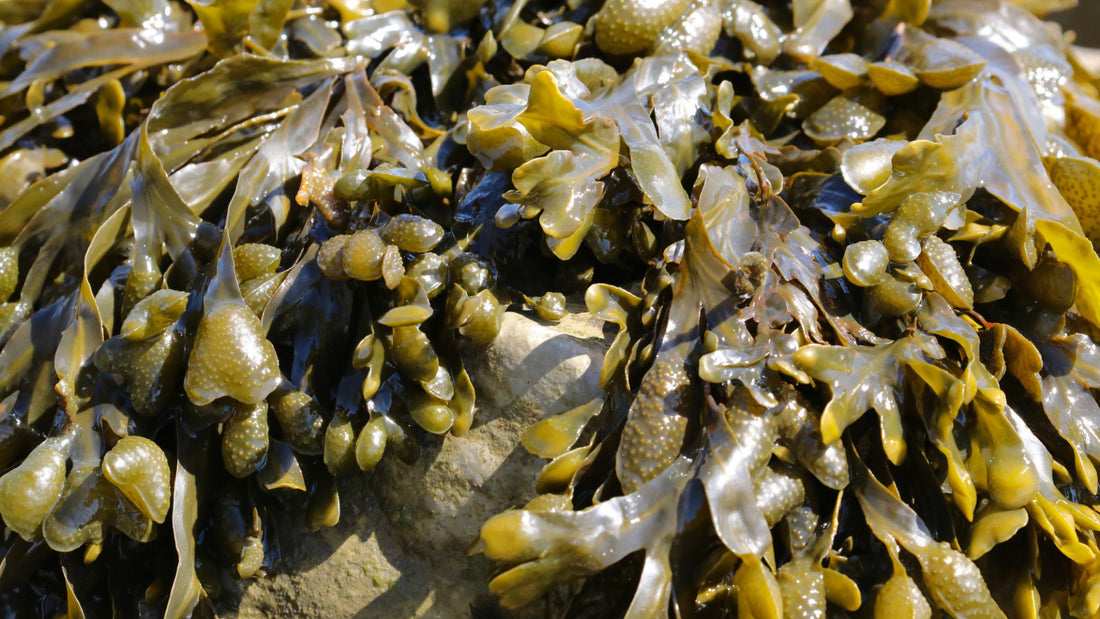Looking for a natural way to colour your soap? Seaweed is popular in soap recipes because it is 100% natural and it produces a natural green coloured bar of soap.
You can try to infuse fresh seaweed into water, however the easiest way of using seaweed in your soap is to use seaweed powder. This is made from dried seaweed and can be added to your soap at trace.
Our seaweed powder is made from sea kelp, and does have a strong seaweed scent. This will carry through to the finished bar of soap and will combine with the scent of the essential oils. However, as your seaweed soap cures it will start to lose the seaweed smell.
Read on to find out how to make seaweed soap!
Equipment:
- Gloves
- Goggles
- Weighing scales
- Digital thermometer
- Heatproof bowl
- Plastic measuring jugs, ideally 2x 1L and 1x 2L
- Silicone spatula
- Soap mould or DIY alternative
- Stick blender
Ingredients:
- Olive oil 400g | 435ml
- Coconut oil 200g
- Unrefined cocoa butter 160g
- Castor oil 40g | 42ml
- Water 240g
- Sodium hydroxide 111g
- Seaweed powder 15g
- Rosemary essential oil 4g | 4ml
- Cedarwood atlas essential oil 9g | 10ml
- Eucalyptus essential oil 3g | 3ml
- Lemongrass essential oil 8g | 9ml
Method:

1. Mix the sodium hydroxide solution
- Put on your gloves and goggles.
- Open a window, the fumes are unpleasant.
- Weigh the water.
- Weigh the sodium hydroxide.
- Add the sodium hydroxide to the water not the other way around.
- Mix well until combined.
- Leave to cool, it will be hot.

2. Weigh and melt the oils
- Weigh the olive oil, coconut oil, cocoa butter and castor oil into a heatproof bowl.
- Melt over a pan of boiling water, or using short bursts in the microwave.
- Stir regularly.
- Once melted, leave to cool.
- In a separate jug, weigh and mix your essential oils.
- Weigh the seaweed powder.
- Add it to your essential oils and mix well.

3. Test the temperatures
- Test the temperature of the sodium hydroxide solution. It should be between 25C and 40C.
- Leave it to cool if necessary, but don't reheat it if it's too cool.
- Test the temperature of the oil mixture. It should be between 35C and 40C.
- Leave it to cool or reheat if necessary.
- Once the temperatures are correct, add the sodium hydroxide solution to the oil mixture.

4. Blend until trace
- Stir with the hand blender, and blend with short pulses.
- Watch for the soap batter starting to thicken.
- Test for trace by dripping soap batter on the surface of the mixture. If the drips sit on the surface before disappearing, your mixture has reached trace.
- Stop blending once your soap has reached trace.
- Add the essential oils.
- Mix and blend a little until combined.

5. Pour into moulds
- Pour your soap moulds. We also provide a range of shaped silicone soap moulds!
- Tap on the work surface to get rid of air bubbles.
- Insulate with towels.
- Leave on a flat surface for 48 hours

6. Leave to cure
- Unmould your soap.
- Place bars with a space in between.
- Leave to cure for 4-6 weeks
Continue reading
Now you've tried our seaweed soap recipe, why not continue learning?
- Learn more about essential oils, read our guide to essential oils for soap making
- Try making your own foot scrub with our peppermint foot scrub recipe
- Want to try hot process soap making? Try our easy hot process soap recipe.



